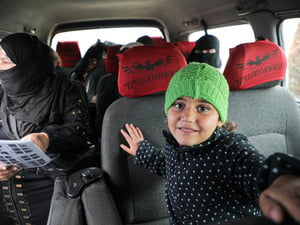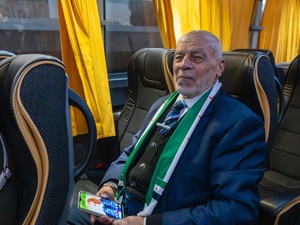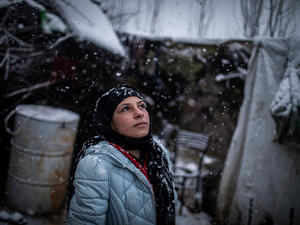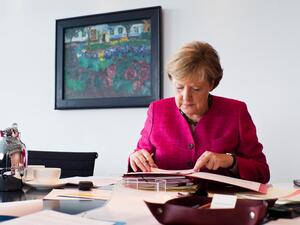Growing concerns for Syrian civilians amid intense fighting in Al Raqqa and Deir ez-Zor
Growing concerns for Syrian civilians amid intense fighting in Al Raqqa and Deir ez-Zor

Zahra looks at her newborn baby Abdul Wahid at Ain Issa camp in northern Syria. She fled Raqqa with her husband and other children shortly after giving birth.
UNHCR is deeply concerned for the safety and well-being of the civilian population in Al Raqqa city, where an estimated 8,000 people remain trapped by ongoing fighting.
Those who manage to escape speak of deteriorating conditions inside the city. Food, water, medicine and electricity are scarce. UNHCR reiterates our call that trapped civilians be allowed safe passage to reach safety, shelter, and protection. These people face the bleak choice of staying in the city engulfed by conflict or fleeing through the fighting – with either choice risking death.
Nearly 270,000 people have fled their homes in Al Raqqa Governorate since the beginning of April. Most of them, some 209,000, remain displaced within the governorate, while up to 40,000 have found shelter in Aleppo, 13,000 in Idleb, 6,600 in Deir ez-Zor and 1,400 in Hama.
In the neighbouring Deir ez-Zor governorate, we are equally alarmed by the ongoing fighting and the consequences for civilians. In the first week of October alone, an estimated 95,000 men, women and children were reportedly displaced by fighting to 60 locations across the governorate, as well as the nearby governorates of Al-Hassakeh, Al Raqqa and Aleppo.
UNHCR has stepped up preparations in camps near Al Raqqa and is expanding Ain Issa camp (some 45km north of Al Raqqa city) to be ready to receive more displaced Syrians from both Al Raqqa and Deir ez-Zor.
UNHCR is currently sheltering over 34,000 internally displaced Syrians in Ain Issa, Mabrouka, Areesha and Al Hol camps, which have the capacity to take in more people when needed. These camps are being expanded, with ongoing construction and maintenance work, installing facilities, paving roads, and erecting tents. The camps are a safe space where displaced people can receive aid, food, water, shelter, primary health care, education and psycho-social support.
Meanwhile, in the west of the country, UNHCR has completed the delivery of vital humanitarian supplies to several towns in rural Hama for the first time in over a year. This area of rural Hama had been hard to reach due to fighting which resulted in significant damage to and destruction of infrastructure, schools, hospitals and homes, and caused tens of thousands to flee their homes. An estimated 13,000 people have returned to Hama governorate between January and August 2017. Around 12,000 returned to Suran city alone. This week UNHCR dispatched humanitarian assistance for 3,200 families (16,000 people) who have returned recently to Suran and surrounding towns.
Aid supplies - especially winterization kits – are crucial interventions in the cold and mountainous rural regions of Syria where electricity and other utilities are very limited. UNHCR is stepping up delivery to people in need across Syria as part of its winter programme.
For more information on this topic, please contact:
- In Amman, Rula Amin, [email protected], +962 (0)790 04 58 49
- In Damascus, Firas Al-KHATEEB, [email protected], +963 930 403 228
- In Geneva, Andrej Mahecic, [email protected], +41 79 642 97 09








